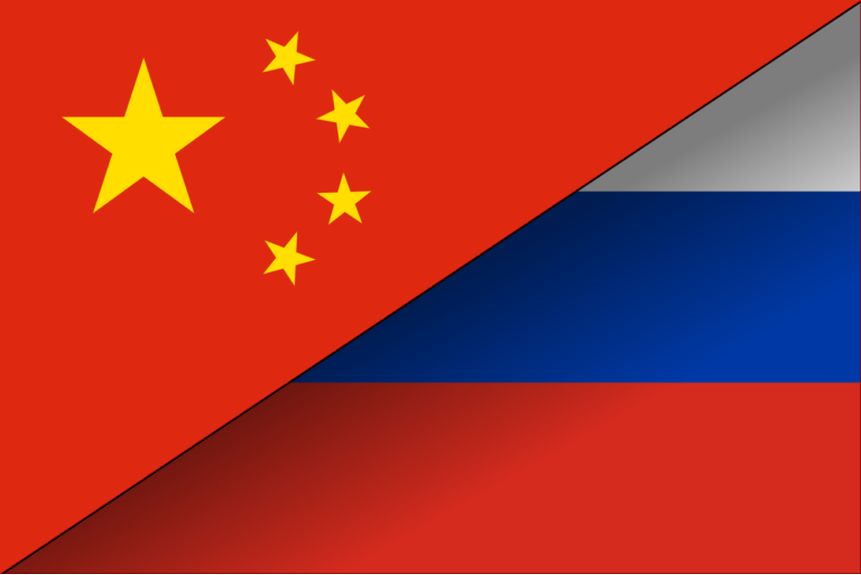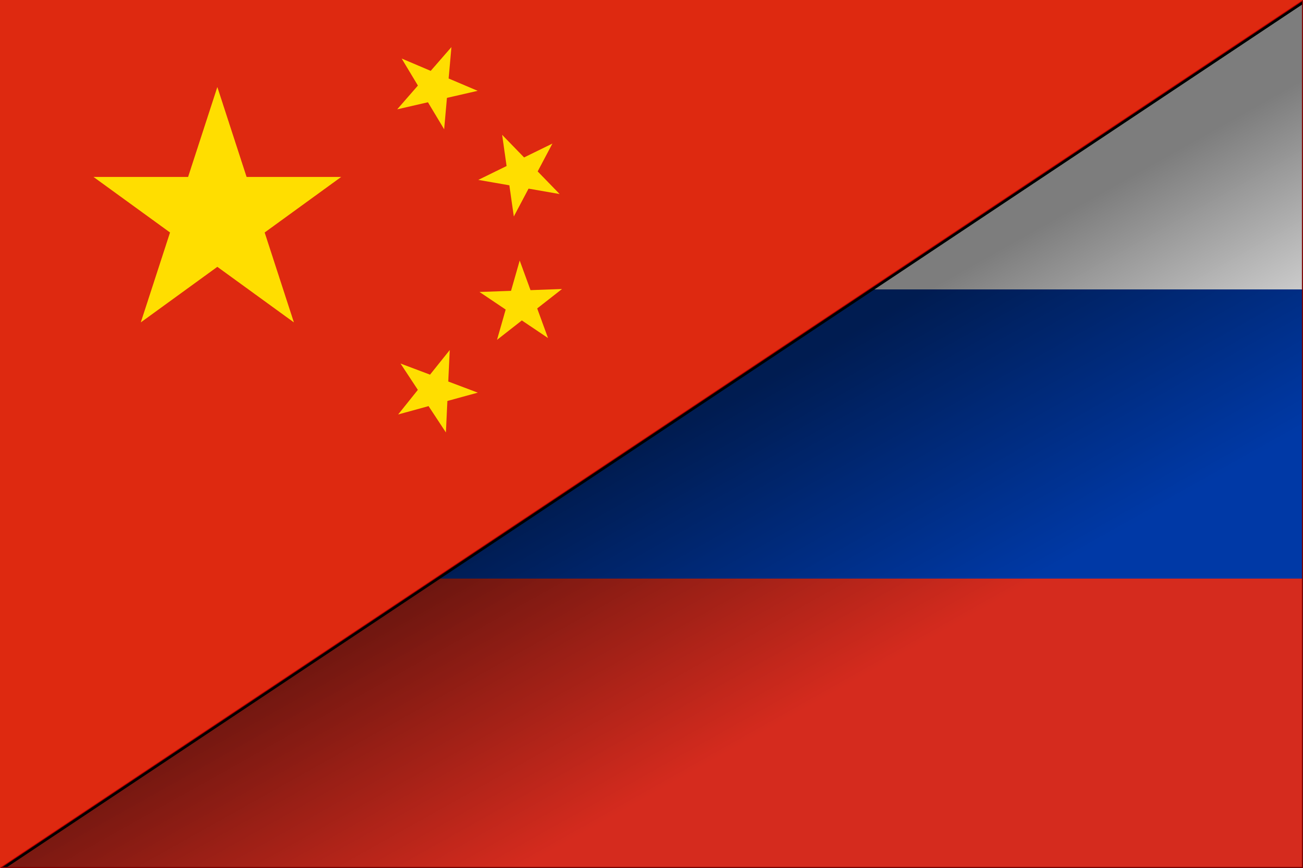
China-Russia Pledges of Deeper Cooperation Show Tangible Results

Chinese and Russian Flags.
“…We continue to expand local currency settlements and establish mechanisms to counteract the negative effects of unilateral sanctions. The Agreement between the Russian Government and the Chinese Government on Settlement and Payment signed in 2019 became an important milestone in this work.”
“The two sides reiterated that they firmly support each other’s core interests, national sovereignty and territorial integrity, and oppose external interference in the internal affairs of the two countries.”
Russian President Vladimir Putin visited Beijing in early February, and Russia and China took the opportunity to cement their increasingly close relationship further. The accompanying excerpts from Putin’s public letter and a joint statement, both published by Chinese state media outlet Xinhua, give some sense of the future direction of this relationship. Central to both the letter and the joint statement is the expressed desire to expand cooperation across a wide range of areas, including space exploration, development of the Arctic, transportation, science, and technological development.
The two countries have successively upgraded relations from a constructive partnership (1994), to strategic partnership of coordination for the 21st century (1996), to a comprehensive strategic coordinated partnership (2011), to a new-era Sino-Russian comprehensive strategic coordinated Partnership (2019) (See “China Upgrades Relations with Russia,” OE Watch, July 2019). These titles have been accompanied by real improvements in the two countries’ levels of cooperation. In particular, Putin’s letter highlighting the importance of joint efforts to improve each side’s ability to use local currencies in payments has helped Russia mitigate the effects of international sanctions.
Cooperation in the energy sector has further benefited both sides as China looks to transition its energy grid to use more natural gas as a cleaner and more efficient alternative to coal while Russia is diversifying and expanding its sales of oil and gas. The two sides have steadily opened new transportation links to improve cross-border trade, including a bridge connecting Heihe and Blagoveschensk along the Amur River, which forms part of China’s northeast border with Russia (See “New Bridge to Connect Russia’s Far East with China’s Northeast,” OE Watch, February 2020). In Putin’s letter, these links and improving trade have taken on additional importance as both countries look to expand trade after the negative effects of the global pandemic.
The joint statement expands upon the pledges of economic cooperation mentioned in Putin’s letter, promising increasing connectivity across Eurasia and cooperation in developing the Arctic. The statement also systematically touches upon issues of concern to each side, ranging from core interests such as the “One China” Principle and the status of Taiwan, to the historical account of Russia’s role in World War Two. It devotes significant time to defending their respective interpretations of democracy and positioning Russia and China as defenders of the post-World War Two international system and global security. While both sides likely harbor some doubts about the long-term value of cooperation due to the massive inequalities in the size of their respective economies and populations, improving trade and scientific cooperation as well as backing each other diplomatically could pay significant dividends in expanding both countries’ national power in the near term.
Source:
“普京通过新华社发表署名文章《俄罗斯和中国:着眼于未来的战略伙伴》(Putin published a signed article through Xinhua News Agency ‘Russia and China: Strategic Partners for the Future’),” Xinhua (PRC State News agency), 3 February 2022.
http://www.news.cn/2022-02/03/c_1128325398.htm
OR
https://web.archive.org/web/20220203015000/http://www.news.cn/2022-02/03/c_1128325398.htm
….We continue to expand local currency settlements and establish mechanisms to counteract the negative effects of unilateral sanctions. The Agreement between the Russian Government and the Chinese Government on Settlement and Payment signed in 2019 became an important milestone in this work.
A mutually beneficial energy alliance is being formed between our two countries. In addition to the long-term delivery of oil and gas to China, we also plan to implement a series of large-scale joint projects. One of the projects is the construction of four new generating units at China’s nuclear power plant from last year, with the participation of the Russian State Atomic Energy Corporation. All of this greatly enhances the energy security of China and the entire Asian region.
We believe that the two countries have extensive opportunities to develop partnerships in the information and communications industry, medicine, and space exploration, including the application of national navigation systems and the implementation of the International Lunar Research Station project. The “Year of Science and Technology Innovation” held 2020-2021 and hosted by both countries has injected a huge impetus into strengthening bilateral relations.
Accelerating the socio-economic development of Siberia and the Far East is one of Russia’s strategic tasks. These regions are the regions closest to China. We plan to actively develop local cooperation, attract Chinese investment and technology, and expand global transportation and trade routes. For example, modernization and upgrading of the Baikal-Amur and Trans-Siberian railways have already begun. Its capacity will be doubled and a half by 2024 by increasing the volume of transit freight and shortening transit times. In addition, the port infrastructure in the Russian Far East has also been developed. All of these will further enhance the complementarity of the Russian and Chinese economies.… We have the same position on international trade issues. We advocate maintaining an open, transparent and non-discriminatory multilateral trading system based on the rules of the World Trade Organization, and agree to restart the global supply chain. As early as March 2020, Russia proposed an initiative to build a “green corridor” for trade without any sanctions, political and administrative barriers. The implementation of this initiative will help overcome the economic impact of the pandemic….
Source: “中华人民共和国和俄罗斯联邦关于新时代国际关系和全球可持续发展的联合声明 (Joint Statement of People’s Republic of China and the Russian Federation on International Relations in the New Era and Global Sustainable Development),” Xinhua (PRC State News agency), 4 February 2022. http://www.gov.cn/xinwen/2022-02/04/content_5672025.htm
… The two sides will actively promote the cooperation between the joint construction of the “Belt and Road” and the Eurasian Economic Union, and deepen the practical cooperation between China and the Eurasian Economic Union in various fields. Improve the level of connectivity in the Asia-Pacific and Eurasian regions. The two sides are willing to continue to promote the parallel and coordinated development of the joint construction of the “Belt and Road” and the “Greater Eurasian Partnership”, promote the development of regional organizations and the process of bilateral and multilateral economic integration, and benefit the people of all countries in the Eurasian continent.
The two sides agreed to further deepen pragmatic cooperation in Arctic sustainable development…
The two sides expressed deep concern over the severe challenges facing the international security situation, and believed that the people of all countries share a common destiny, and no country can and should not achieve its own security by breaking away from world security and at the expense of the security of other countries. The international community should actively participate in global security governance to achieve common, comprehensive, cooperative and sustainable security.
The two sides reiterated that they firmly support each other’s core interests, national sovereignty and territorial integrity and oppose external interference in the internal affairs of the two countries.
The Russian side reiterated that it abides by the one-China principle, recognizes that Taiwan is an inalienable part of China’s territory, and opposes any form of “Taiwanese independence.”
China and Russia oppose external forces undermining the security and stability of the two countries’ common surrounding areas, oppose external forces interfering in the internal affairs of sovereign countries under any pretext, and oppose “color revolutions”, and will strengthen cooperation in the areas mentioned above.
… The two sides believe that individual countries, military-political alliances or alliances seek direct or indirect unilateral military superiority, harm the security of other countries through unfair competition and other means, intensify geopolitical competition, exaggerate rivalry and confrontation, seriously undermine the international security order, and undermine global strategic stability. . The two sides oppose the continued expansion of NATO, and call on NATO to abandon the ideology of the Cold War, respect the sovereignty, security, interests, and diversity of civilizations, history and culture of other countries, and view the peaceful development of other countries in an objective and fair manner. The two sides oppose the establishment of a closed alliance system in the Asia-Pacific region and the creation of confronting camps, and are highly vigilant of the negative impact of the “Indo-Pacific strategy” promoted by the United States on the peace and stability of the region. China and Russia have always been committed to building a security system in the Asia-Pacific region that is equal, open, inclusive, and not targeting third countries, and maintains peace, stability, and prosperity.
Image Information:
Image: Chinese and Russian Flags.
Attribution: Image by Author. Permission to use image granted by author
Distribution A: Approved for public release
Categories:
Tags:







